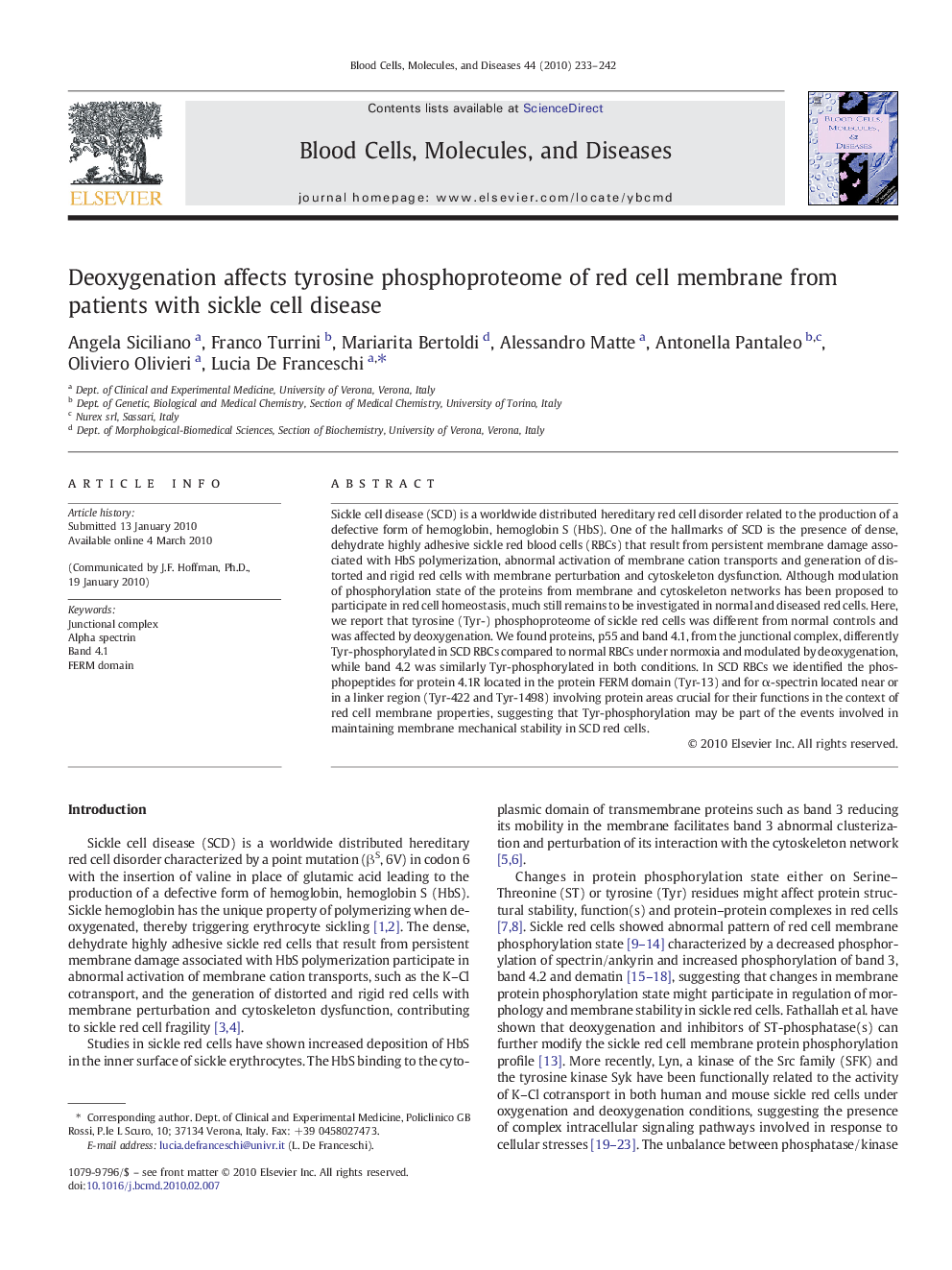| Article ID | Journal | Published Year | Pages | File Type |
|---|---|---|---|---|
| 2827917 | Blood Cells, Molecules, and Diseases | 2010 | 10 Pages |
Sickle cell disease (SCD) is a worldwide distributed hereditary red cell disorder related to the production of a defective form of hemoglobin, hemoglobin S (HbS). One of the hallmarks of SCD is the presence of dense, dehydrate highly adhesive sickle red blood cells (RBCs) that result from persistent membrane damage associated with HbS polymerization, abnormal activation of membrane cation transports and generation of distorted and rigid red cells with membrane perturbation and cytoskeleton dysfunction. Although modulation of phosphorylation state of the proteins from membrane and cytoskeleton networks has been proposed to participate in red cell homeostasis, much still remains to be investigated in normal and diseased red cells. Here, we report that tyrosine (Tyr-) phosphoproteome of sickle red cells was different from normal controls and was affected by deoxygenation. We found proteins, p55 and band 4.1, from the junctional complex, differently Tyr-phosphorylated in SCD RBCs compared to normal RBCs under normoxia and modulated by deoxygenation, while band 4.2 was similarly Tyr-phosphorylated in both conditions. In SCD RBCs we identified the phosphopeptides for protein 4.1R located in the protein FERM domain (Tyr-13) and for α-spectrin located near or in a linker region (Tyr-422 and Tyr-1498) involving protein areas crucial for their functions in the context of red cell membrane properties, suggesting that Tyr-phosphorylation may be part of the events involved in maintaining membrane mechanical stability in SCD red cells.
